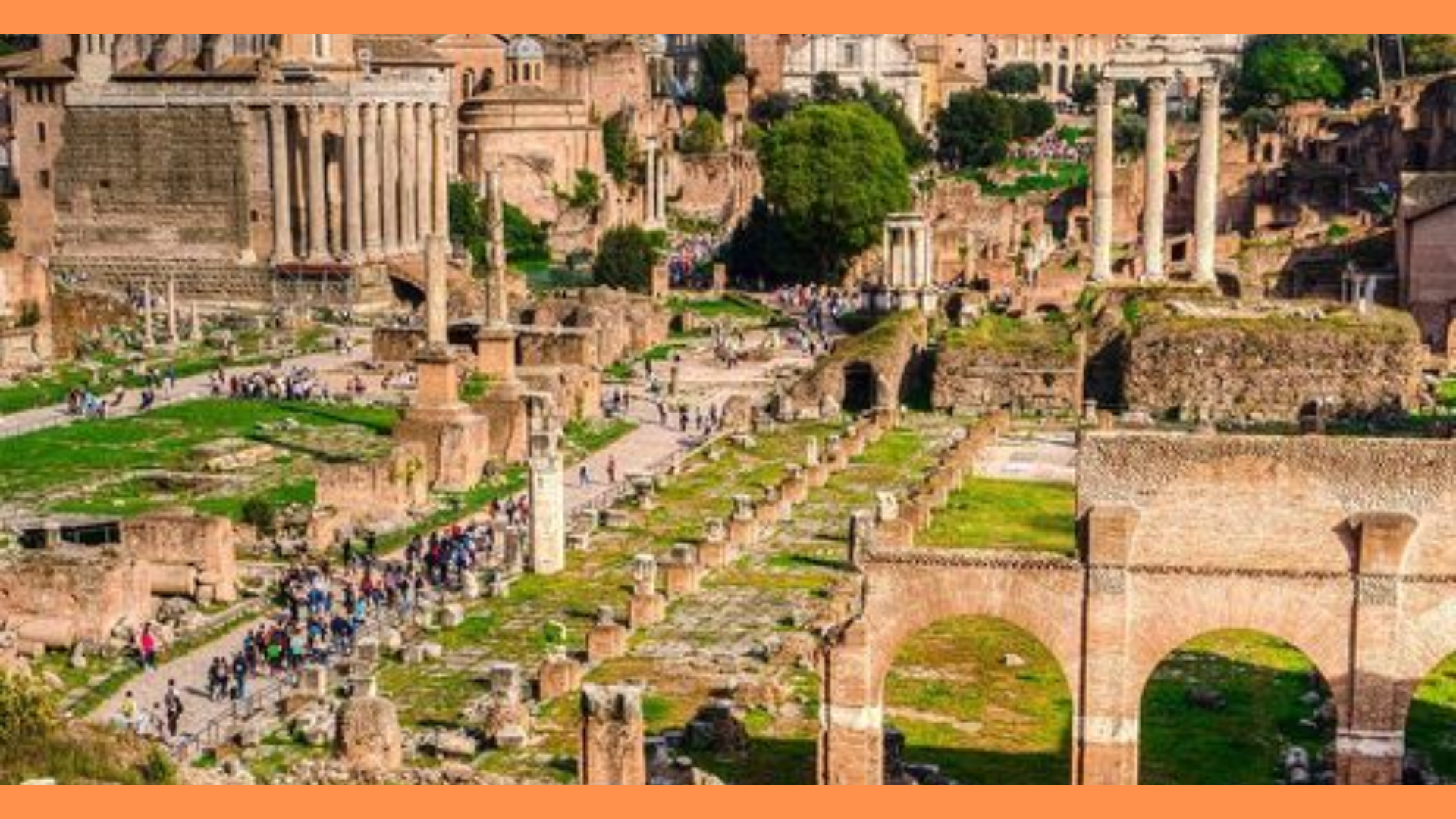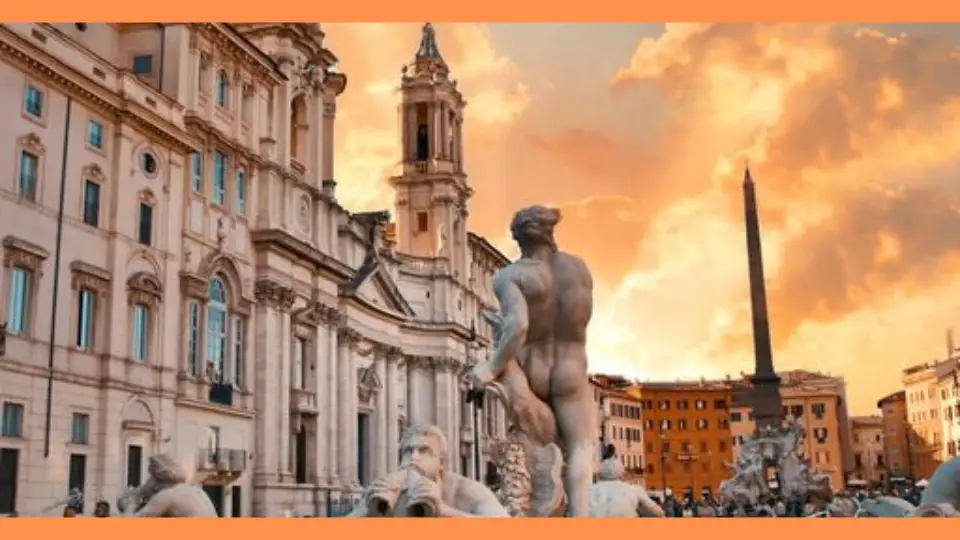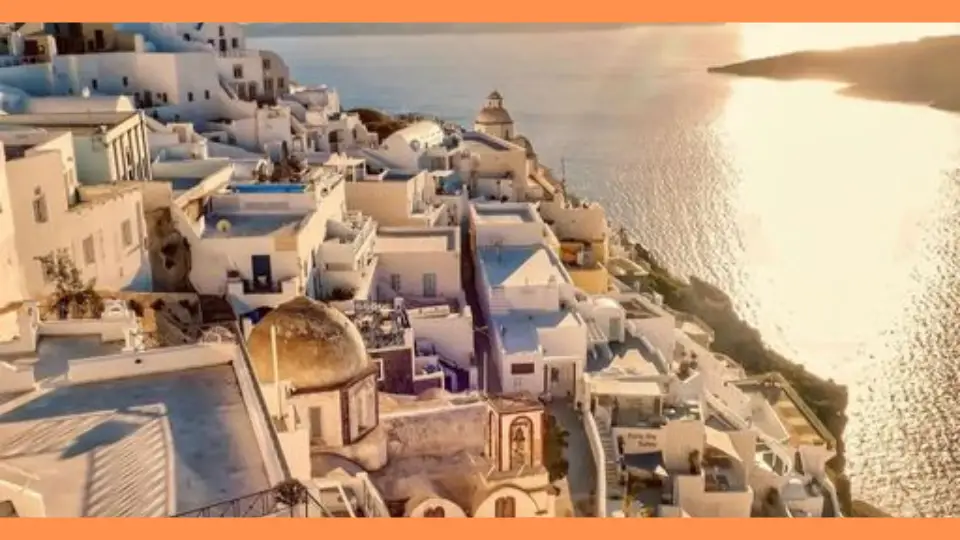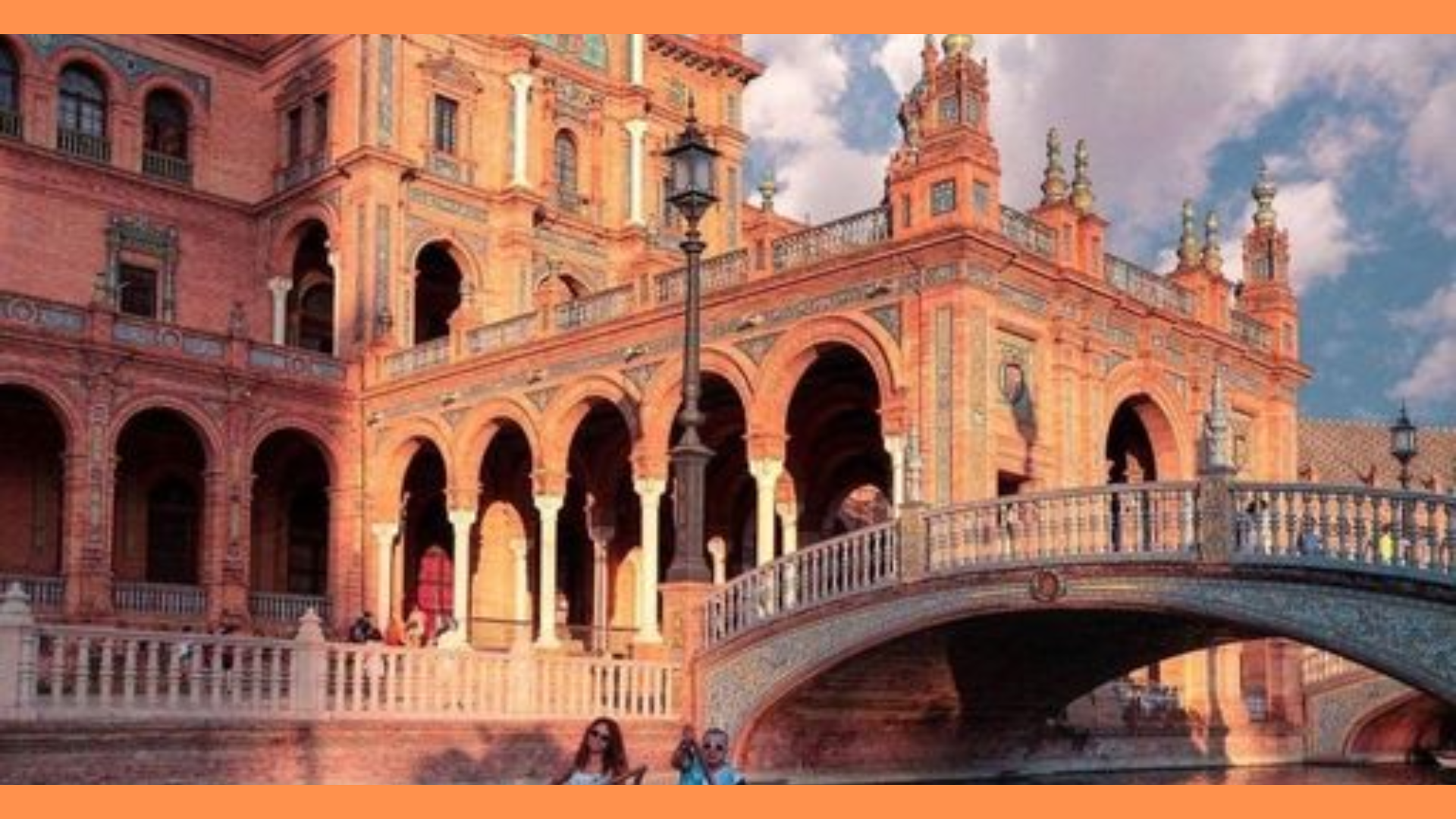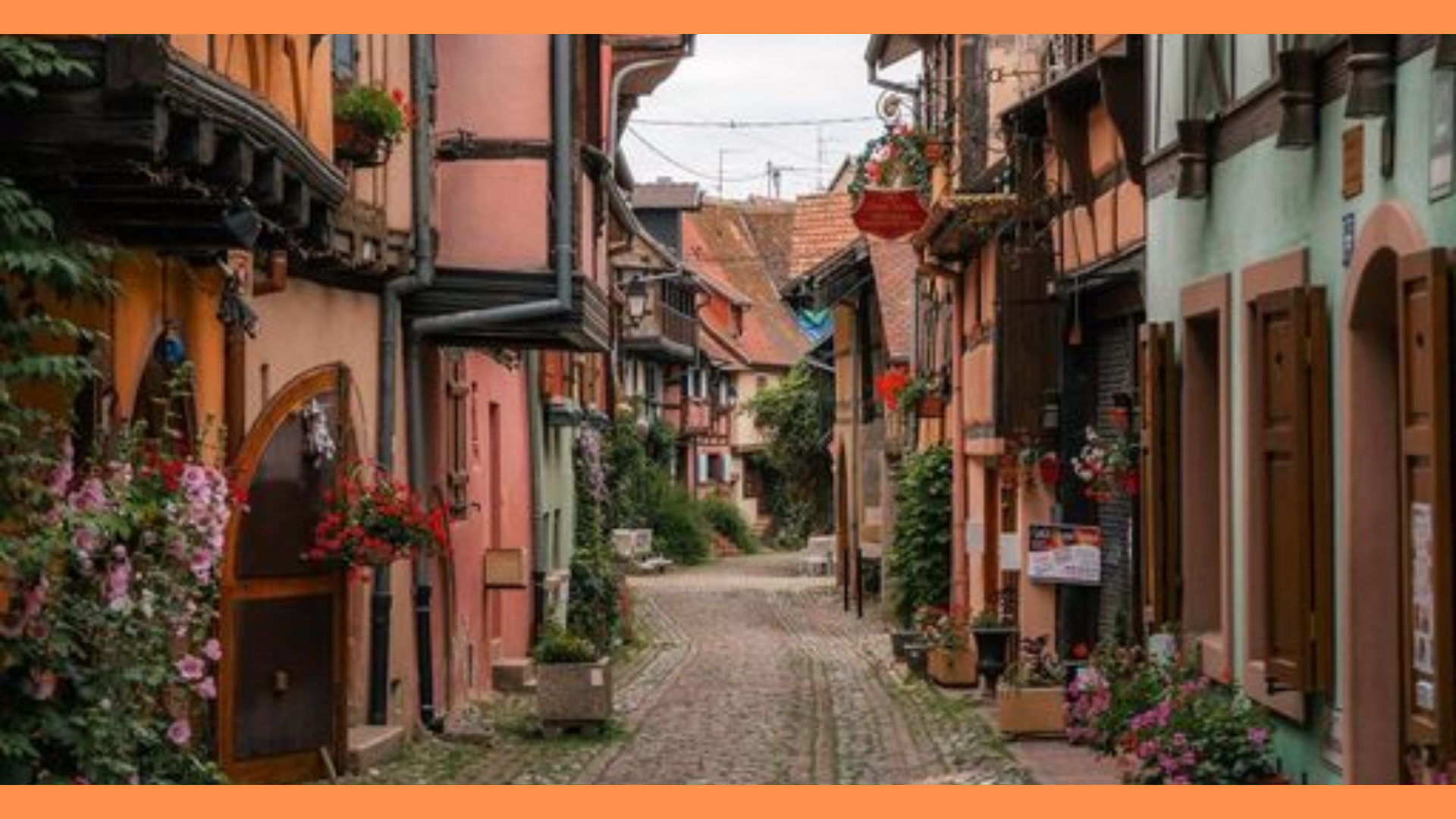Rome, with its blend of historical landmarks, vibrant cultural experiences, and exceptional cuisine, offers an unforgettable travel experience. From exploring ancient ruins and enjoying traditional dishes to discovering modern attractions and engaging with local markets, Rome provides a rich tapestry of experiences that showcase its timeless allure.
Whether you’re marveling at the Colosseum’s grandeur or savoring a plate of Carbonara, Rome promises a journey that captivates and delights, making it a destination like no other.
I. Introduction
Rome, the Eternal City, is a captivating destination where ancient history, rich culture, and delectable cuisine converge. As Italy’s capital, Rome offers a blend of historic landmarks, vibrant neighborhoods, and a culinary scene that reflects its diverse heritage.
From the majestic ruins of the Colosseum to the bustling markets and charming trattorias, Rome presents an immersive experience for travelers seeking to explore one of Europe’s most iconic cities. This article delves into the must-visit destinations and culinary delights that define Rome, providing a comprehensive guide to navigating and savoring this timeless city.
II. Travel Destinations in Rome
Rome’s historical landmarks, including the Colosseum, Roman Forum, Pantheon, and Vatican City, offer a deep dive into the city’s rich past. Each site provides a unique window into ancient Rome’s grandeur, from the Colosseum’s gladiatorial games to the Vatican’s spiritual and artistic treasures. These landmarks not only highlight Rome’s historical significance but also showcase its architectural and cultural evolution.
A. Historical Landmarks
1. Colosseum
The Colosseum, an architectural marvel and one of the most recognizable symbols of Rome, stands as a testament to the grandeur of ancient Roman engineering. Constructed in AD 80, this colossal amphitheater was the stage for gladiatorial contests, animal hunts, and public spectacles. Visitors can explore its vast interior, walk the arena floor, and marvel at the intricate underground passages where gladiators and beasts awaited their fate. Guided tours offer insights into the Colosseum’s history and the lives of those who participated in its events, enhancing the visitor experience.
2. Roman Forum
Adjacent to the Colosseum lies the Roman Forum, once the heart of ancient Rome’s public life. This sprawling complex of ruins includes the remnants of temples, basilicas, and government buildings that played a central role in the political, economic, and social life of the city. Key sites within the Forum include the Temple of Saturn, the Arch of Titus, and the House of the Vestal Virgins. Walking through the Forum, visitors can imagine the bustling activity that once filled these ancient streets and gain a deeper understanding of Rome’s past.
3. Pantheon
The Pantheon, originally constructed as a temple to the Roman gods, is renowned for its impressive dome and oculus, which remains one of the largest unsupported domes in the world. Completed around AD 126, the Pantheon is celebrated for its architectural innovation and has been continuously used as a place of worship. Inside, visitors can admire the tombs of notable figures such as the artist Raphael and several Italian kings. The Pantheon’s well-preserved state and historical significance make it a must-see landmark in Rome.
4. Vatican City
Vatican City, an independent city-state within Rome, is the spiritual and administrative center of the Roman Catholic Church. It houses several remarkable sites:
- St. Peter’s Basilica: This iconic church, with its grand dome designed by Michelangelo, is one of the largest churches in the world. The basilica is a pilgrimage site for Catholics and a masterpiece of Renaissance architecture.
- Sistine Chapel: Famous for Michelangelo’s frescoes on the ceiling, including the Creation of Adam, the Sistine Chapel is a marvel of Renaissance art. The chapel also hosts the papal conclave, where a new pope is elected.
- Vatican Museums: The Vatican Museums contain an extensive collection of art and historical artifacts amassed by the Catholic Church over centuries. Highlights include the Raphael Rooms, the Gallery of Maps, and the Vatican Library.
A visit to Vatican City is essential for those interested in art, history, and religion. Booking tickets in advance and considering guided tours can enhance the experience and provide deeper insights into the city-state’s treasures.
5. Trevi Fountain
The Trevi Fountain, a Baroque masterpiece completed in 1762, is renowned for its dramatic design and the tradition of tossing coins into the fountain to ensure a return to Rome. Designed by Nicola Salvi and later completed by Giuseppe Pannini, the fountain features a central statue of Neptune, surrounded by allegorical figures and intricate carvings. The fountain’s grand scale and artistic details make it a popular spot for visitors seeking to experience Rome’s architectural splendor.
B. Cultural Experiences
1. Trastevere Neighborhood
Trastevere, a charming neighborhood on the west bank of the Tiber River, is known for its narrow, winding streets and vibrant atmosphere. The area is home to historic buildings, quaint squares, and a lively nightlife. Highlights include the Basilica of Santa Maria in Trastevere, one of the oldest churches in Rome, and Piazza Santa Maria, a bustling square surrounded by cafes and restaurants. Trastevere offers a glimpse into traditional Roman life and is a great place to explore on foot, enjoy local cuisine, and soak in the city’s unique ambiance.
2. Spanish Steps and Piazza di Spagna
The Spanish Steps, a famous staircase of 135 steps, connect Piazza di Spagna with the Trinità dei Monti church. The steps are a popular gathering place and a great spot for people-watching. Piazza di Spagna, located at the base of the steps, is known for its elegant architecture and upscale shops. The area is also home to the Keats-Shelley Memorial House, dedicated to the Romantic poets John Keats and Percy Bysshe Shelley. The Spanish Steps and Piazza di Spagna provide a blend of historical significance and modern vibrancy.
3. Gianicolo Hill
Gianicolo Hill offers some of the best panoramic views of Rome. Situated on the Janiculum Hill, the viewpoint overlooks the city’s skyline, providing a stunning backdrop for photographs. The hill is also home to historical landmarks such as the Garibaldi Monument, dedicated to the Italian revolutionary Giuseppe Garibaldi. Gianicolo Hill is a peaceful escape from the bustling city center and is ideal for a relaxing stroll and a chance to take in Rome’s scenic beauty.
C. Modern Attractions
1. MAXXI Museum
The MAXXI Museum (National Museum of 21st Century Arts) is a contemporary art museum designed by architect Zaha Hadid. The museum’s striking architecture and innovative design reflect the cutting-edge nature of its exhibits. The MAXXI showcases a diverse range of contemporary art, including paintings, sculptures, and multimedia installations. Visitors can explore the museum’s temporary exhibitions and permanent collection, which highlight the work of both Italian and international artists.
2. Quartiere Coppedè
Quartiere Coppedè is a unique district known for its eclectic architectural style, blending elements of Art Nouveau, Baroque, and ancient influences. Designed by architect Gino Coppedè in the early 20th century, the district features whimsical buildings with ornate facades and imaginative details. A walk through Quartiere Coppedè offers a fascinating contrast to Rome’s more traditional architecture and provides an opportunity to see a different side of the city’s design heritage.
III. Cuisine of Rome
Rome’s traditional dishes, such as Carbonara, Amatriciana, and Cacio e Pepe, are celebrated for their simplicity and rich flavors. These classic pasta dishes highlight the essence of Roman cuisine, emphasizing high-quality ingredients and time-honored recipes. Each dish tells a story of Rome’s culinary heritage, offering a taste of the city’s authentic flavors.
A. Traditional Dishes
1. Carbonara
Carbonara is a quintessential Roman pasta dish known for its creamy texture and rich flavors. Made with eggs, pecorino cheese, pancetta (or guanciale), and black pepper, Carbonara is a perfect example of Roman culinary simplicity. The dish’s creamy sauce is achieved without cream, relying on the emulsion of eggs and cheese. To enjoy an authentic Carbonara experience, try renowned Roman trattorias such as Da Enzo al 29 or Roscioli.
2. Amatriciana
Amatriciana is another classic Roman pasta sauce made with tomatoes, pancetta, and pecorino cheese. The dish is named after the town of Amatrice, located near Rome, and is a staple in Roman cuisine. The combination of savory pancetta and tangy tomato sauce creates a flavorful and satisfying meal. For an authentic Amatriciana, visit restaurants like Taverna Trilussa or L’Arcangelo.
3. Cacio e Pepe
Cacio e Pepe is a simple yet delicious pasta dish made with just three ingredients: pasta, pecorino cheese, and black pepper. This dish highlights the importance of quality ingredients and traditional cooking techniques. The cheese and pepper are combined with pasta water to create a creamy sauce without the use of cream. To experience Cacio e Pepe at its best, try Flavio al Velavevodetto or Pipero Roma.
B. Local Specialties
1. Supplì
Supplì are Roman-style fried rice balls filled with a gooey center of cheese and often accompanied by ragù (meat sauce). These tasty bites are a popular street food and appetizer in Rome. The crispy exterior and savory filling make Supplì a beloved treat. For the best Supplì, visit Supplizio or Pizzarium.
2. Carciofi alla Romana
Carciofi alla Romana is a traditional Roman dish featuring artichokes braised with garlic, mint, and olive oil. The artichokes are cooked until tender and infused with aromatic herbs, creating a flavorful and satisfying dish. This classic Roman specialty can be enjoyed at local restaurants such as La Matriciana or Il Margutta RistorArte.
3. Roman-Style Pizza
Roman-style pizza is characterized by its thin, crispy crust and is typically served in rectangular slices. The pizza is often topped with simple ingredients like tomatoes, mozzarella, and fresh basil, allowing the quality of the ingredients to shine. To savor Roman-style pizza, visit Pizzeria La Montecarlo or Pizzeria Ai Marmi.
C. Desserts and Sweets
1. Tiramisu
Tiramisu is a beloved Italian dessert made with layers of coffee-soaked ladyfingers and mascarpone cheese. The dessert is flavored with cocoa powder and often features a hint of Marsala wine. Tiramisu’s creamy texture and rich flavor make it a favorite among dessert lovers. Enjoy this classic treat at establishments like Pompi or Le Levain.
2. Gelato
Gelato, Italian-style ice cream, is known for its rich flavor and creamy texture. Gelato comes in a wide variety of flavors, from traditional options like chocolate and vanilla to unique combinations like pistachio and stracciatella. For an authentic gelato experience, visit Gelateria del Teatro or Giolitti.
D. Markets and Food Experiences
1. Campo de’ Fiori Market
Campo de’ Fiori Market is a vibrant open-air market offering a wide range of fresh produce, meats, cheeses, and local specialties. The market’s lively atmosphere and colorful stalls provide a glimpse into Roman daily life. Visitors can sample local products, purchase ingredients for a homemade meal, or enjoy street food from various vendors.
2. Testaccio Market
Testaccio Market is a traditional market known for its authentic Roman cuisine and street food. The market features vendors selling fresh ingredients, prepared foods, and local delicacies. Highlights include traditional Roman dishes, such as porchetta (roast pork) and pizza bianca (white pizza). Testaccio Market is a great place to experience the flavors of Rome and interact with local vendors.
IV. Practical Information
The best times to visit Rome are during the spring and fall when the weather is pleasant, and the city is less crowded. These seasons offer a comfortable climate for exploring Rome’s attractions and experiencing outdoor events. Summer can be hot and crowded, while winter offers a quieter, cooler alternative for those looking to avoid peak tourist times.
A. Best Time to Visit
Rome is a year-round destination, but the best times to visit are during the spring (April to June) and fall (September to October). These seasons offer pleasant weather, fewer crowds, and a chance to experience outdoor events and festivals. Summer (July and August) can be hot and crowded, while winter (November to March) is cooler and less crowded, providing a different perspective on the city’s attractions.
B. Getting Around Rome
Rome’s public transportation system includes metro lines, buses, and trams, making it easy to navigate the city. The metro system consists of three lines (A, B, and C), with stops near major landmarks. Buses and trams cover areas not served by the metro. Walking and biking are also popular options for exploring central Rome, and car rentals are available for those wishing to venture outside the city.
C. Accommodation Options
Rome offers a range of accommodation options to suit various budgets. Luxury hotels include Hotel de Russie and The Westin Excelsior, offering top-notch amenities and central locations. Mid-range options such as Hotel Artemide and Albergo del Senato provide comfortable stays at reasonable prices. Budget travelers can choose from hostels like The Beehive or guesthouses such as Casa Iannuzzi.
D. Tips for Visitors
- Local Etiquette: Italians value polite greetings and respect for personal space. It’s customary to greet people with a “Buongiorno” (Good morning) or “Buonasera” (Good evening).
- Safety and Health: Rome is generally safe for travelers, but it’s important to stay aware of your surroundings and keep an eye on personal belongings. Drinking tap water is safe, and numerous pharmacies are available for any health concerns.
- Language and Communication: While many Romans speak English, learning a few basic Italian phrases can enhance your experience. Simple greetings, such as “Ciao” (Hello) and “Grazie” (Thank you), can go a long way.
Rome, with its rich tapestry of history, culture, and cuisine, offers an unforgettable experience for travelers. From exploring ancient ruins and vibrant neighborhoods to savoring traditional dishes and contemporary culinary delights, the Eternal City invites you to immerse yourself in its timeless charm. Whether you’re marveling at the Colosseum’s grandeur, wandering through Trastevere’s lively streets, or indulging in a classic plate of Carbonara, Rome promises a journey that will linger in your memory long after you’ve left its storied streets.

